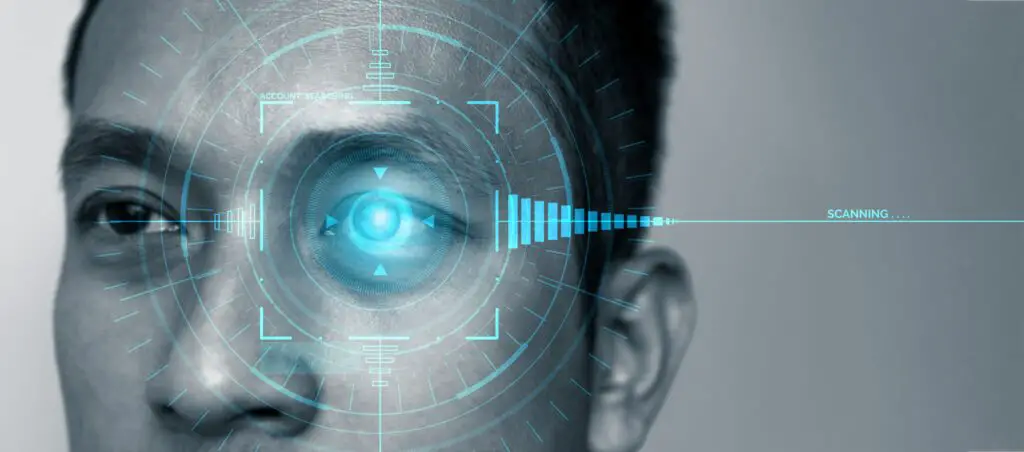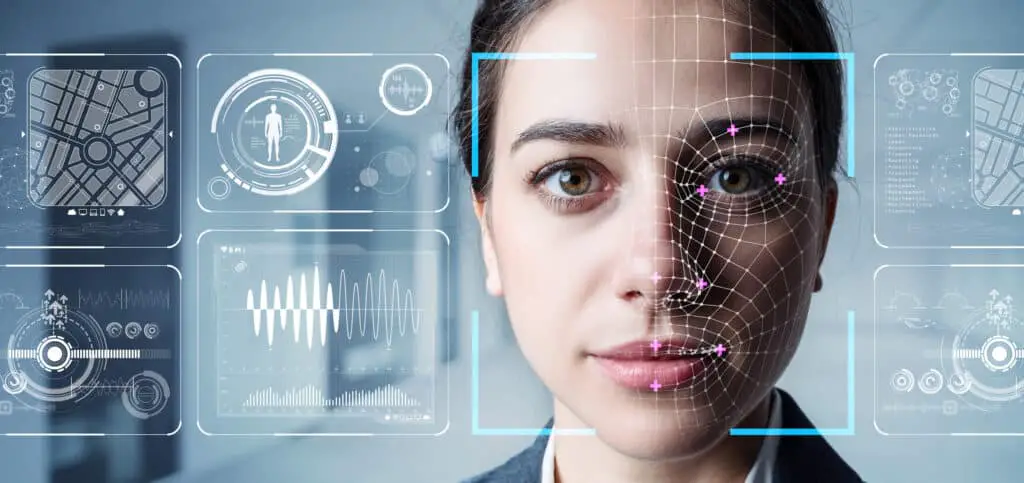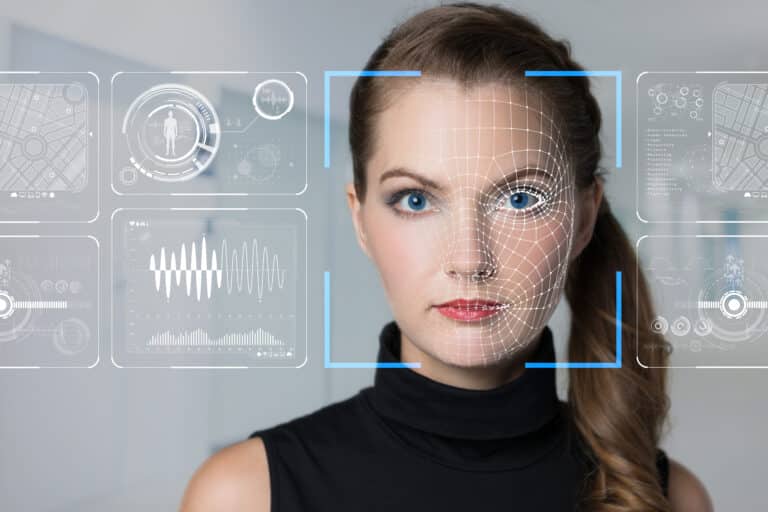Introduction
How Does Voice Biometrics Work: Voice biometrics is a cutting-edge technology that has revolutionized the field of security and authentication. It is a method of identifying individuals based on their unique vocal characteristics. Unlike traditional methods of identification such as passwords or fingerprints, voice biometrics offers a more secure and convenient way to verify a person’s identity.
Voice biometrics record works by analyzing various aspects of an individual’s voice, such as pitch, tone, and rhythm. These unique vocal characteristics are then converted into a digital representation known as a voiceprint. This voiceprint is stored in a database and can be used for future comparisons.
When a person wants to be authenticated using voice biometrics, they simply speak into a microphone or phone. The system then compares their voice to the stored voiceprints in the database. If there is a match, the person is granted access. If there is no match, access is denied.
One of the key advantages of voice biometrics is its convenience. Unlike passwords or fingerprints, a person’s voice is always with them, making it easy to authenticate their identity. Voice biometrics can be used in a variety of applications, such as unlocking smartphones, accessing bank accounts, or even controlling smart home devices.

How accurate is voice biometrics?
Voice biometrics is a technology that uses the unique characteristics of an individual’s voice to verify their identity. It has gained popularity in recent years as a secure and convenient method of authentication. However, the accuracy of voice biometrics has been a topic of debate among experts.
On one hand, proponents of voice biometrics argue that it is a highly accurate form of identification. They point to studies that have shown high success rates in correctly identifying individuals based on their voice patterns. These studies often compare voice biometrics to other forms of identification, such as fingerprint or facial recognition, and argue that voice biometrics is just as accurate, if not more so.
On the other hand, critics of voice biometrics argue that it is not as accurate as proponents claim. They highlight instances where voice biometrics has failed to correctly identify individuals, leading to security breaches or false rejections. They argue that factors such as background noise, changes in voice due to illness or aging, and variations in pronunciation can all affect the accuracy of voice biometrics.
It is important to note that the accuracy of voice biometrics can vary depending on the specific implementation and the quality of the voice samples used. Factors such as the type of microphone used, the distance between the speaker and the microphone, and the quality of the audio recording can all impact the accuracy of voice biometrics.
Voice biometrics has shown promise as a secure and convenient method of identification, its accuracy is not without limitations. Further research and development are needed to improve the technology and address the concerns raised by critics.”
Can voice recognition be fooled?
Voice recognition technology has become increasingly prevalent in our daily lives, from voice assistants like Siri and Alexa to voice authentication systems for security purposes. However, as with any technology, there are always concerns about its vulnerabilities and potential for being fooled. So, can voice recognition be fooled?
The short answer is yes. While voice recognition technology has advanced significantly in recent years, it is not foolproof and can be tricked under certain circumstances. One common way to fool voice recognition systems is through voice impersonation. By mimicking someone else’s voice or using voice synthesis techniques, individuals can deceive the system into thinking they are someone else.
Another way to fool voice recognition is through the use of voice conversion techniques. This involves modifying the characteristics of one’s voice to sound like someone else. By altering factors such as pitch, tone, and accent, individuals can manipulate the system into recognizing their voice as someone else’s.
However, it is important to note that fooling voice recognition systems is not an easy task. These systems are designed to be robust and have built-in mechanisms to detect and prevent fraud. They use sophisticated algorithms and machine learning techniques to analyze various aspects of a person’s voice, such as pitch, frequency, and pronunciation, to create a unique voiceprint.
Additionally, voice recognition systems often employ multi-factor authentication methods to enhance security. This means that simply fooling the system with a voice impersonation or voice conversion technique may not be enough to gain unauthorized access. Other factors, such as passwords or biometric data, may also be required to authenticate a user’s identity.
Can voice recognition identify a person?
Voice recognition technology has come a long way in recent years, with advancements in machine learning and artificial intelligence allowing for more accurate and reliable identification of individuals based on their unique vocal characteristics. While voice recognition technology is primarily used for tasks such as speech-to-text conversion and voice commands, it is also capable of identifying a person based on their voice.
Voice recognition technology works by analyzing various aspects of an individual’s voice, such as pitch, tone, and rhythm, to create a unique vocal profile. This profile is then compared to a database of known vocal profiles to determine the identity of the speaker. The accuracy of voice recognition systems can vary depending on factors such as the quality of the audio recording and the complexity of the vocal profile being analyzed.
One of the main challenges in voice recognition technology is dealing with variations in an individual’s voice due to factors such as age, health conditions, and emotional state. However, advancements in machine learning algorithms have allowed for the development of more robust voice recognition systems that can adapt to these variations and still accurately identify a person.
Voice recognition technology has a wide range of applications, from security systems that use voice authentication to grant access to authorized individuals, to call centers that use voice recognition to identify customers and provide personalized service. In addition, voice recognition technology can also be used in forensic investigations to analyze voice recordings and identify potential suspects.
While voice recognition technology has made significant advancements in recent years, it is not without its limitations. Factors such as background noise, language barriers, and variations in recording quality can affect the accuracy of voice recognition systems. However, ongoing research and development in the field are continuously improving the capabilities of voice recognition technology, making it an increasingly reliable tool for identifying individuals based on their voice.
What are the dangers of voice recognition?
Voice recognition technology has become increasingly popular in recent years, with many people using it on their smartphones, smart speakers, and other devices. While this technology offers convenience and ease of use, there are also potential dangers associated with voice recognition that users should be aware of.
One of the main dangers of voice recognition is the potential for unauthorized access to personal information. Voice recognition systems often require users to provide personal information, such as their name, address, and even credit card details. If this information falls into the wrong hands, it can be used for identity theft or other malicious purposes.
Another danger of voice recognition is the potential for false positives or false negatives. Voice recognition systems are not perfect and can sometimes misinterpret or fail to recognize a user’s voice. This can lead to frustration and inconvenience for users, especially if they are locked out of their devices or accounts due to a voice recognition error.
Additionally, voice recognition technology can also be vulnerable to hacking or manipulation. Hackers can potentially intercept or manipulate voice commands, leading to unauthorized access or control of devices. This can have serious consequences, especially if voice recognition is used to control critical systems or devices.
Lastly, there are also concerns about the privacy implications of voice recognition technology. Voice commands are often stored and analyzed by companies for various purposes, such as improving the accuracy of voice recognition or targeted advertising. This raises concerns about the collection and use of personal data without users’ knowledge or consent.
What is the difference between voice recognition and voice biometrics?
Voice recognition and voice biometrics are two terms that are often used interchangeably, but they actually refer to different technologies. While both involve the use of voice to identify individuals, there are some key differences between the two.
Voice recognition is a technology that is used to identify and authenticate individuals based on their voice patterns. It involves the analysis of various characteristics of a person’s voice, such as pitch, tone, and rhythm, to create a unique voiceprint. This voiceprint is then compared to a database of known voiceprints to determine the identity of the speaker. Voice recognition is commonly used in applications such as voice-controlled devices, voice assistants, and voice commands.
Voice biometrics, on the other hand, is a more advanced form of voice recognition that focuses on the unique physical and behavioral characteristics of an individual’s voice. It goes beyond just analyzing the basic characteristics of a person’s voice and also takes into account factors such as the shape of the vocal tract, the movement of the vocal cords, and the way a person pronounces certain words. This allows for a more accurate and secure form of identification. Voice biometrics is commonly used in applications such as voice authentication for banking and financial transactions, access control systems, and fraud prevention.
One of the main differences between voice recognition and voice biometrics is the level of accuracy and security they offer. While voice recognition can be effective in many applications, it is not as secure as voice biometrics. Voice biometrics takes into account more factors and is therefore more difficult to spoof or imitate. This makes it a more reliable form of identification.
Another difference is the level of complexity involved in implementing these technologies. Voice recognition is relatively simpler and can be easily integrated into various devices and applications. Voice biometrics, on the other hand, requires more advanced algorithms and processing power to analyze and compare the additional factors involved. This can make it more challenging and expensive to implement.
Voice biometrics is based on the technology of analyzing and identifying unique characteristics in an individual’s voice. It uses a combination of acoustic and behavioral features to create a voiceprint, which is a digital representation of an individual’s voice. This technology relies on the fact that each person has a unique vocal tract, which produces distinct patterns of sound when speaking.
The process of voice biometrics involves capturing a person’s voice sample and extracting various features such as pitch, tone, rhythm, and pronunciation. These features are then converted into mathematical algorithms and stored as a voiceprint in a database. When a person wants to be authenticated, their voice is compared to the stored voiceprints to determine if there is a match.
Voice biometrics technology is constantly evolving and improving, with advancements in machine learning and artificial intelligence. This technology has proven to be highly accurate and reliable, making it a valuable tool for various applications such as security, fraud prevention, and customer service.
Voice biometrics technology is revolutionizing the way we authenticate individuals based on their voice. By analyzing unique characteristics in an individual’s voice, this technology provides a secure and convenient method of identification. It eliminates the need for traditional methods such as passwords or PINs, which can be easily forgotten or compromised.
Furthermore, voice biometrics technology is non-intrusive and user-friendly. It can be seamlessly integrated into existing systems and applications, making it easily accessible for both businesses and individuals. This technology has the potential to enhance security measures in various industries, including banking, healthcare, and telecommunications.
How does voice biometrics authenticate individuals based on their voice?
Voice biometrics authenticates individuals based on their unique vocal characteristics. When a person speaks, their voice produces a distinct pattern of sound waves that can be analyzed and compared to a stored voiceprint. This voiceprint is created by capturing and analyzing various vocal features such as pitch, tone, rhythm, and pronunciation.
During the authentication process, the individual’s voice is compared to their enrolled voiceprint. If the two match within a certain threshold, the individual is authenticated. This process is often referred to as text-independent voice verification, as it does not require the individual to speak specific phrases or words.
Voice biometrics technology uses advanced algorithms and machine learning techniques to accurately analyze and compare voiceprints. These algorithms can account for variations in speech caused by factors such as background noise, emotional state, or physical conditions. By leveraging these unique vocal characteristics, voice biometrics provides a secure and convenient method of authentication.
Can voice biometrics accurately distinguish between different individuals?
Voice biometrics is a technology that uses the unique characteristics of an individual’s voice to identify and authenticate them. It analyzes various aspects of the voice, such as pitch, tone, and rhythm, to create a voiceprint that is unique to each individual. This voiceprint is then compared to a database of known voiceprints to determine the identity of the speaker.
Yes, voice biometrics can accurately distinguish between different individuals. The technology has advanced significantly in recent years, and it is now highly accurate and reliable. Studies have shown that voice biometrics can achieve accuracy rates of over 99% in identifying individuals. This level of accuracy makes voice biometrics a valuable tool for a wide range of applications, including security and fraud prevention.
One of the key advantages of voice biometrics is that it is difficult to fake or imitate someone else’s voice. Unlike other forms of biometrics, such as fingerprints or facial recognition, a person’s voice can be captured and analyzed without their knowledge or consent. This makes voice biometrics a powerful tool for identifying individuals in situations where other forms of identification may not be possible or practical.
What are the potential applications of voice biometrics in various industries?
Voice biometrics technology has a wide range of potential applications across various industries. One of the most prominent applications is in the field of security and authentication. Voice biometrics can be used to verify the identity of individuals accessing secure systems or making transactions over the phone. This can greatly enhance security measures and prevent unauthorized access or fraudulent activities. Industries such as banking, healthcare, and telecommunications can benefit from voice biometrics in this regard.
Another potential application of voice biometrics is in customer service and call center operations. By using voice biometrics, companies can automatically identify and authenticate customers, eliminating the need for lengthy verification processes. This can improve the overall customer experience by reducing wait times and providing personalized services. Additionally, voice biometrics can be used for voice-based commands and control in smart homes, vehicles, and other IoT devices, making interactions more convenient and seamless.
Are there any limitations or challenges associated with voice biometrics technology?
Voice biometrics technology, while highly advanced and effective, does come with its own set of limitations and challenges. One of the main limitations is the issue of accuracy. While voice biometrics can accurately authenticate individuals based on their voice, there can be instances where the system fails to recognize a person correctly. This can happen due to various factors such as background noise, changes in voice due to illness or fatigue, or even intentional voice disguises. These factors can affect the accuracy of voice biometrics and may lead to false acceptances or false rejections.
Another challenge associated with voice biometrics is the issue of scalability. Voice biometrics systems need to be trained with a large amount of voice data in order to accurately distinguish between different individuals. This can be a time-consuming and resource-intensive process, especially for organizations with a large number of users. Additionally, as the number of users increases, the computational power required to process and match voice samples also increases, which can pose scalability challenges for some systems.

Conclusion
Voice biometrics is a fascinating technology that has revolutionized the field of security and authentication. By analyzing the unique characteristics of an individual’s voice, voice biometrics systems are able to accurately identify and verify individuals. This technology works by capturing and analyzing various vocal features such as pitch, tone, and rhythm, and comparing them to a pre-recorded voiceprint stored in a database.
One of the key advantages of voice biometrics is its non-intrusive nature. Unlike other forms of biometric authentication such as fingerprint or iris scanning, voice biometrics does not require any physical contact or specialized equipment. This makes it a convenient and user-friendly solution for a wide range of applications, from phone banking to access control systems.
Furthermore, voice biometrics offers a high level of accuracy and security. The unique characteristics of an individual’s voice are difficult to replicate or forge, making it a reliable method of authentication. Additionally, voice biometrics systems can adapt and learn over time, improving their accuracy and performance as they gather more data.
Voice biometrics is a powerful technology that offers a secure and convenient method of authentication. By analyzing the unique characteristics of an individual’s voice, voice biometrics systems can accurately identify and verify individuals. This technology is non-intrusive, user-friendly, and offers a high level of accuracy and security. As voice biometrics continues to advance, it is likely to become an increasingly common and integral part of our everyday lives, providing a seamless and secure authentication experience.

